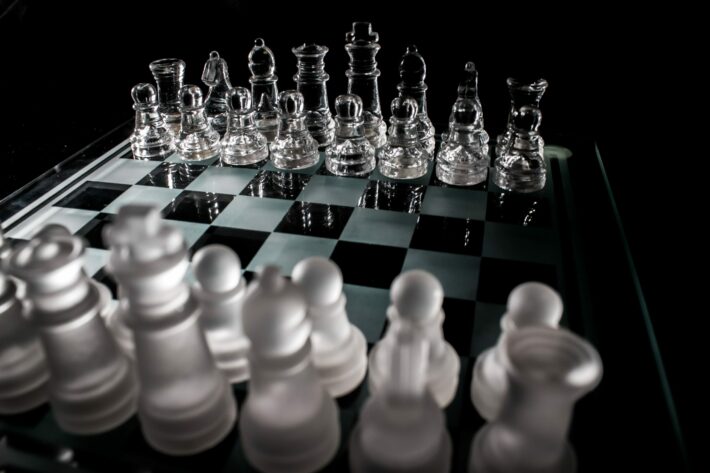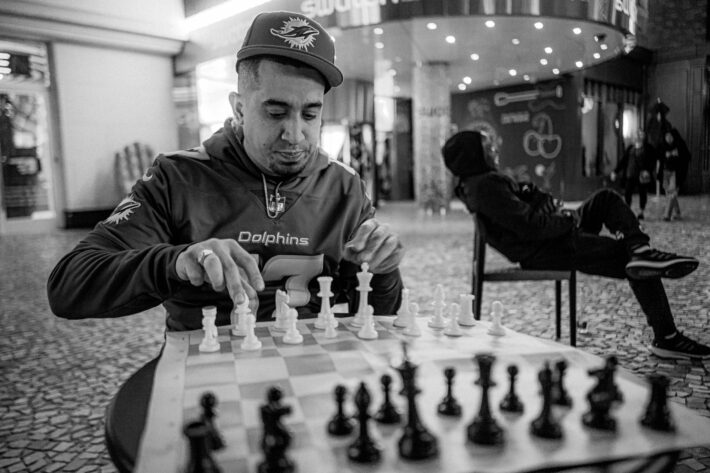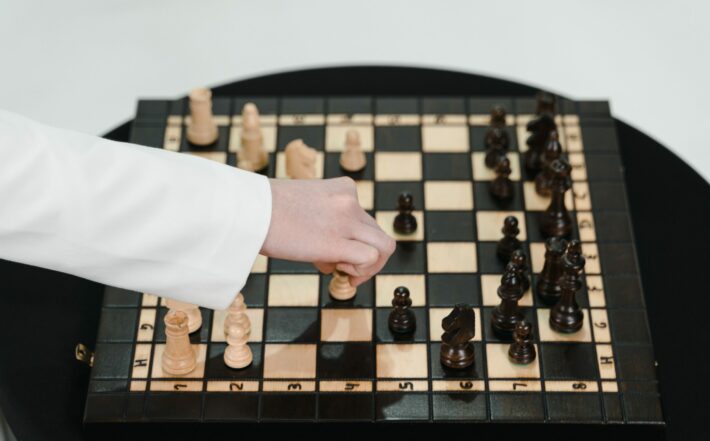Are you ready to elevate your chess game to new heights? One crucial aspect of strategic play lies in understanding how to develop your pieces effectively. By maximizing the potential of your pawns, knights, bishops, rooks, and queen, you can gain a significant advantage over your opponent.
In this article, we will explore innovative and thought-provoking ways to develop your pieces, revolutionizing your approach to the game and boosting your chances of victory.
How does piece development influence the outcome of a chess game?
The strategic development of your chess pieces holds the power to sway the outcome of your game. By skillfully mobilizing your pieces across the board, you can seize control of key positions, launch devastating attacks, and unleash your tactical prowess.
Effective piece development establishes a harmonious flow, enabling your forces to coordinate and exert pressure on your opponent’s position. The ability to exploit piece development to its fullest potential can tilt the scales of victory in your favor.
What are the key principles behind successful piece development?
Successful piece development in chess hinges on a few fundamental principles. Firstly, prioritize the activation of your pieces, aiming to bring them to squares that enhance their influence and scope. Secondly, establish harmonious coordination between your pieces, fostering synergy and creating a formidable force.
Thirdly, be mindful of your opponent’s intentions and develop your pieces in a manner that counters their plans. Lastly, adapt your development strategy based on the unique demands of the position, adapting to changing dynamics and exploiting potential weaknesses.
Which pieces should be developed first, and why?
In the opening stages of a chess game, certain pieces take precedence when it comes to development. Typically, it is advisable to prioritize the development of knights and bishops. Knights, with their unique ability to jump over other pieces, can swiftly stake their claim in the center, influencing the board’s key squares.
Bishops, on the other hand, can unleash their potential along diagonals, exerting long-range pressure and contributing to a strong positional presence. By developing these pieces early on, you establish a solid foundation and set the stage for a dynamic and flexible game.
How can pawn structure affect your piece development strategy?

The intricate interplay between pawn structure and piece development is a crucial consideration in chess strategy. The placement and advancement of pawns can create opportunities and constraints for your pieces. A well-coordinated pawn structure can provide safe havens and support for your pieces, allowing for smooth development.
Conversely, a compromised or weakened pawn structure may restrict the mobility of your pieces and expose vulnerabilities. Understanding how pawn structure impacts your development strategy empowers you to navigate the chessboard with finesse and exploit weaknesses in your opponent’s position.
Is it better to develop knights or bishops first?
When it comes to choosing between developing knights or bishops first, there is no definitive answer. The decision depends on the unique demands of the position and the game’s evolving dynamics. Developing knights early can bring them closer to the center, exerting immediate influence and preparing for potential tactical maneuvers.
Conversely, developing bishops first allows for long-range influence along diagonals, potentially pressuring your opponent’s position from a distance. Flexibility and adaptability are key; assess the position, consider your long-term plans, and make a strategic decision based on the specific context.
What are the common mistakes to avoid when developing your pieces?
While developing your pieces, it is essential to be mindful of common pitfalls that can hinder your progress. One mistake to avoid is developing your pieces to squares that offer limited influence or restrict their mobility. Another error is neglecting the coordination between your pieces, which can lead to fragmented forces and missed opportunities.
Additionally, overlooking your opponent’s potential threats during development can leave your pieces vulnerable. Lastly, overextending your pieces without adequate support or protection can expose them to tactical counterplay. By being aware of these common mistakes, you can navigate your piece development journey with confidence and precision.
How can you leverage your queen’s power during piece development?
The queen, the most powerful piece on the chessboard, can play a pivotal role during piece development. To leverage your queen’s power effectively, consider positioning her in a manner that maximizes her influence and potential.
For example, placing the queen on squares that control critical diagonals, files, or key central squares can exert substantial pressure on your opponent’s position.
Moreover, the queen can contribute to piece coordination, supporting the development of other forces and establishing a strong positional presence. By strategically utilizing your queen’s power during development, you can set the stage for a dominant and dynamic game.
Are there any special tactics or maneuvers for developing rooks effectively?
Developing rooks effectively involves a few special tactics and maneuvers that can enhance their impact on the game. One powerful technique is connecting the rooks by developing them to open files, allowing for their coordination and the potential for devastating double attacks or threats.
Another maneuver is considering rook lifts, where a rook is maneuvered to a higher rank, often behind a solid pawn structure, to exert pressure along the rank or support an advancing pawn. By employing these special tactics and maneuvers, you can unleash the full potential of your rooks during development and seize the initiative on the chessboard.
Can you still recover from a poor start in piece development?
A poor start in piece development may initially seem discouraging, but fear not, as the dynamic nature of chess offers ample opportunities for recovery. To bounce back, focus on rectifying your piece placement and activating them gradually.
Look for tactical opportunities that allow you to catch up in development and disrupt your opponent’s plans. Embrace a flexible mindset, adapt to the changing demands of the position, and capitalize on any weaknesses in your opponent’s setup. Remember, in chess, the tides can turn swiftly, and with strategic maneuvering, you can recover from a sluggish start and turn the tables in your favor.
How can you disrupt your opponent’s piece development plans?

Disrupting your opponent’s piece development plans can throw them off balance and provide you with a significant advantage. One effective method is to target their vulnerable or poorly protected pieces, forcing them to divert their attention from development to defense.
Creating tactical complications can also disrupt their plans, as it may require them to reassess their strategy and expend valuable time and resources on solving immediate threats.
By seizing control of key squares and launching aggressive maneuvers, you can hinder your opponent’s piece development, disrupt their coordination, and gain the upper hand in the battle for board dominance.
What role does the king play in piece development?
While often seen as a vulnerable piece to be sheltered, the king can play a subtle yet significant role in piece development. In the early stages, prioritize the safety of your king by castling, thereby securing its position and freeing your rook for potential activity.
As the game progresses, the king can transition from a passive role to an active one, participating in endgame scenarios and contributing to pawn promotion.
Additionally, the king’s presence can influence the positioning of other pieces, as they often need to consider protecting or aligning with their monarch. Balancing the king’s safety with its potential to support other forces is a delicate yet essential aspect of effective piece development.
Should you prioritize piece development over other strategic considerations?
While piece development is crucial, it is not the sole strategic consideration in chess. The overall position, pawn structure, central control, king safety, and potential tactical opportunities must also be factored into your decision-making. Balance is key.
Prioritize piece development to establish an active and harmonious force, but remain mindful of the larger strategic landscape. Assess the specific demands of the position, evaluate potential threats and opportunities, and make informed decisions that integrate both piece development and other strategic considerations. A holistic approach that embraces all aspects of the game will lead to a more well-rounded and effective play.
Are there any positional factors to consider during piece development?

Positional factors significantly influence piece development strategies. When developing your pieces, consider the pawn structure and its impact on central control, open lines, and potential weaknesses.
Evaluate the nature of the position—whether it requires an aggressive or solid approach—and adjust your piece development accordingly. Additionally, be aware of key squares and outposts that can provide an advantageous position for your pieces.
Understand the dynamics of piece coordination, space management, and potential pawn breaks, as they all contribute to making informed decisions about piece development. By considering these positional factors, you can tailor your development strategy to exploit the unique characteristics of the position.
How does piece development differ in the opening, middlegame, and endgame?
Piece development evolves across the three distinct phases of the game: the opening, middlegame, and endgame. In the opening, the focus is on quick and effective development, striving to occupy central squares, mobilize forces, and establish a solid foundation.
The middlegame demands a more nuanced approach, with piece development intertwined with strategic planning, tactical opportunities, and maneuvering for positional advantages. In the endgame, piece activity becomes critical, as fewer forces remain on the board.
Here, centralized and coordinated development, often with an emphasis on the king’s involvement, can dictate the outcome of the game. Understanding these developmental nuances across different game phases equips you with the versatility to navigate the changing landscape and make informed decisions accordingly.
Can you devise your own unique piece development strategy?
| Aspect | Importance | Strategy |
|---|---|---|
| Occupying Central Squares | High | Develop pawns and minor pieces towards the center to control key squares and exert influence. |
| Piece Coordination | Crucial | Focus on harmonious piece coordination to create a powerful and united force on the board. |
| Considering Opponent’s Plans | Strategic | Be aware of your opponent’s intentions and develop pieces in a way that counters their plans and disrupts their development. |
| Pawn Structure Impact | Significant | Evaluate pawn structure to understand how it affects piece development, positioning, and potential weaknesses. |
| Adapting to Game Phase | Dynamic | Adjust piece development strategies according to the opening, middlegame, and endgame, considering the specific demands of each phase. |
Absolutely! While there are general principles to guide piece development, chess is a game that encourages creativity and individuality. As you gain experience and deepen your understanding of the game, you can devise your own unique piece development strategy.
Experiment with unconventional approaches, strategic ideas, and different piece coordination. Analyze your games, identify patterns that resonate with your style of play, and refine your strategy based on your strengths and preferences.
Embrace your creativity, trust your intuition, and let your unique piece development strategy emerge, adding a personal touch to your chess repertoire.
Final thoughts
In conclusion, mastering the art of piece development in chess is a fundamental step towards becoming a formidable player. Understanding how piece placement, coordination, and mobility impact the game can give you a significant advantage over your opponents.
By considering factors such as pawn structure, positional considerations, and the evolving dynamics of the game, you can make informed decisions that optimize your piece development strategy. Whether recovering from a slow start, disrupting your opponent’s plans, or devising your own unique approach, piece development offers endless possibilities for creative and strategic play.
So, embrace the challenge, explore the intricacies, and embark on a journey of continuous improvement as you unlock the true potential of your chess pieces. May your future games be marked by brilliant moves, tactical brilliance, and victorious outcomes. Happy chess-playing!




